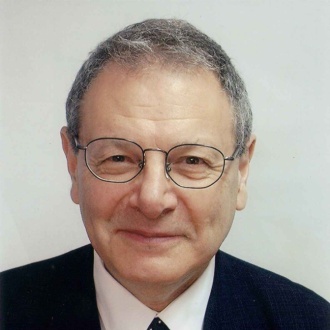Bo : Light and Dark Intertwined
The Ninth Plague
The plague of darkness was such that “no person could see his brother, nor could any person rise from his place for three days. (However) the children of Israel had light in all their homes.” (1)
The physical plague of darkness had its root in a spiritual darkness, which can be defined as the absence of G-d’s revealed presence. In discussing the spiritual origin of this plague the Midrash cites two opinions. R. Nechemia taught that the darkness originated in the regions of Geheinom. (2) R. Yehudah taught that it originated in the celestial spheres. (3) (4)
Two Forms of Darkness
- The classic dark, associated with Geheinom, acts as a curtain. When a curtain is drawn across the window it obstructs the sunlight and leaves the room thoroughly in the dark. This is the darkness of Geheinom, where G-d’s presence is entirely concealed. (5)
- The celestial dark is primordial; it predates all light. G-d’s essence is beyond revelation. When he chose to reveal himself he radiated outwards so that his light would become visible, but beyond the light there was still dark. That dark is the domain of his essence and the essence doesn’t require light. Comfortably ensconced within itself, it doesn’t lack luminescence but transcends it. (6) (7)The classic dark conceals G-d’s light whereas the celestial dark reveals G-d’s essence, which transcends all light.
Projected On the Human Level
These two forms of spiritual dark, when experienced on the human level, elicit two very different reactions. The classic dark is the concealment of light. Left in the spiritual dark the human yearns for G-dliness because his condition craves light.
Celestial dark, on a human level, has a negative spiritual affect. Celestial dark is transcendence of light. Because the human does not transcend light he experiences such transcendence as contentment with dark. If subjected to such contentment for a prolonged period of time he may completely forget the virtue of G-dliness. (8)
Egypt Yearns For Light, Then Grows Content With Darkness
The physical darkness affected Egyptians in two ways. The first was that No person could see his brother and the second was that No person could rise from his place. The Midrash teaches that this plague lasted for six days. For the first three days the Egyptians were unable to see each other but they were still able to rise and move about. During the last three days the darkness intensified to the point that it paralyzed even simple movement. They could no longer even rise from their place. (9)
These physical effects parallel the aforementioned effects of spiritual darkness.
- During the first three-day period Egyptians experienced the classic spiritual darkness in which one feels deprived of light and pines for it. During this time they could not see their brother. In this sense, the brother is a metaphor for G-d’s light. They felt deprived from their brother, and wanted to behold his light, but the dark prevented them from doing so.
- During the second three-day period the dark escalated to the celestial form. They grew content with the dark and no longer pined for their brother. They wanted to break out of this inertia but couldn’t rise from their place. Their place is a metaphor for their contentment with the dark; they couldn’t rise out of this contentment to appreciate the value of G-d’s light. (10)
But Jews Find the Antidote
While Egyptians suffered in the dark Jews were engaged in antidotal pursuits. The Midrash teaches that the plague of darkness struck for two reasons.
- Many Jews didn’t want to leave Egypt so G-d decreed that they would die there. Egyptians remained unaware of this shameful fact because these Jews died and were buried during the period of darkness.
- The darkness provided an opportunity for Jews to circulate in Egyptian homes to determine the location of the valuables that they would later borrow. (11) When Jews later asked to borrow these items, Egyptians could not deny owning them because the Jews would unerringly point to where they were hidden. (12)
Some argue that both reasons are true. During the first three days of the plague the Jews buried their dead and during the second three days they explored Egyptian homes. (13)
On a metaphoric level these two pursuits constitute antidotal activities to the two forms of darkness described above.
- The antidote to darkness that conceals light is to step into the pool of light. During the first three days, while Egyptians pined for the light (see their brother) Jews stepped into it. The Jews clearly distinguished dark from light and the wicked from the righteous. They understood why their brothers died and quickly buried them to remove traces of wickedness from among them.
- The antidote to a darkness that is content with being dark is to peer into the dark and identify its divine root. The fact that man is content without light is a reflection of the fact that his creator transcends light. (14)
During the second three days, while Egyptians struggled to ascend to the realm of light (rise from their place) Jews peered into dark hidden places and discovered gold and silver treasures. (15) In a metaphoric sense gold and silver represent love for G-d. (16) Jews peered into the darkness and discovered their love for its hidden divine roots. (17)
We now see that the verse with which we began teaches three separate points. During the first three days “no person could see his brother.” During the second three days, “nor could any person rise from his place.” However, throughout “ the children of Israel had light in all their homes.” (18)
Footnotes
- Exodus 10, 23.
- Purgatory.
- Shemos Rabbah Parshas Bo p.14, 2.
- The argument between R. Nechemia and R. Yehudah may be linked to another argument between them. R. Nechemia is of the opinion that the universe was created before light. R. Yehudah thought that the light was created before the universe. This distinction (of order of creation) determines the quality of light created on the first day. If light was created before the universe it would have been a celestial light but if it was created after the universe it would have been a terrestrial light. R. Yehudah thought light created on the first day was celestial. It is therefore plausible to argue that this celestial light returned to the universe during the plague. It blinded the immoral Egyptians, which is why they saw it as dark, but was visible to the Jews, which is why they could see in it. R. Nechemia thought that light created on the first day was terrestrial it is therefore not plausible that the universe could contain within it an extraterrestrial light. For more detail see Malbim Exodus 10, 21 (Meir Leib ben Yechiel Michael, Russia 1809-1879).
- See Sefer Maamarim Melukat v. 4 page 44 (R. Menachem M Schneerson Rebbe of Lubavitch 1902 – 1994) and Sefer Haerkim Chabad v. 2 p.582 (Kehas Publishing Society1973)
- See Likutei Torah p.Haazinu p. 73a (Rabbi Schneeur Zalman of Liadi,, founder of the Chabad Chassidic dynasty, 1745 – 1813) See Sefer Maamarim 1906 p. (R. Sholom Ber Schneerson Fifth Rebbe of Lubavitch 1861 – 1920) See Sefer Maamarim Melukat v. 2 p. 285. See Lubavitcher Rebbe’s footnote to Shaar Hayichud V’haemunah ch. 10 published in Lessons of Tanya (Kehos Publishing Society 1945).(7)It would appear that the classic commentators viewed the dark as terrestrial. Ramban, (R. Moshe Ben Nachman, Spain 1194-1270) Ibn Izer (Avraham Ibn Ezra 1089-1164 – Tudela Spain) and Abarnenel (Don Isaac Abarbnel 1437-1508 – Lisbon) interpret the dark as a thick cloud similar to a deep fog over the ocean. R. Bachye (R. Bachya ben Asher, 1255-1340 Saragossa, Spain) interprets the dark as a miraculous prevention of the light rays over Egypt. However Malbim and Kedushas Levi (R’ Levi Yitzhak of Berdichev, 1740-1810) among others see the dark as celestial.
- While contentment with the physical dark is not a cause for concern contentment with spiritual dark surely should be.(For more see Sefer Maamarim Melukat v. 4 page 187.
- Shemos Rabbah Parshas Bo p. 14,4.
- There is no indication in the Midrash or elsewhere that R. Nechemiah and R. Yehudah each addressed themselves to a different three-day segment of the plague. The author suggests this idea by way of speculation only.
- According to this Mirdashic account, the translation of the words “The children of Israel had light in all their homes,” would have to be that the children of Israel had light not only in their own homes but also in every home they visited. Malbim suggests that this account is consistent only with R. Yehuda’s view because the dark of Geheinom does not contain these miraculous properties. This would indicate that after citing both opinions the Midrash itself favors the opinion of R. Yehudah.
- Shemos Rabbah Parshas .Bo p.14, 4. The Midrash adds that Jews did not take a single item without permission. This honesty is what later encouraged the Egyptians to agree to these “loans.”
- Maskil L’david (R. David Pardo, died 1792. – Sarajevo).
- The antidote works in the following manner. Realizing that G-d is root- cause not only of light but also of dark, enables us to glimpse his transcendence i.e. the reason he is found in the dark as well as the light(despite the inherent paradox) is that he transcends them both. This realization should inspire one to reach for him. See Sefer Maamarim Melukat v. 4 page 187. See also Likutei Torah Parshas .Haazinu p. 73a for an alternative antidote.
- According to the Midrashic account, the light that shone for Jews in the darkened Egyptian homes was of a miraculous nature. One of the properties of this light enabled Jews to peer through the very walls of the Egyptian vaults and see the valuables stored therein. The argument developed in this essay, that Jews peered into the darkness and glimpsed the metaphoric treasures of its invisible root, is nicely complemented by the notion of a miraculous light that revealed treasures through a miraculous form of x-ray vision. For more detail see Likutei Sichos V. 31 p.468 44 (R. Menachem M Schneerson Rebbe of Lubavitch 1902 – 1994)
- The gold symbolizes flames of love that we have for G-d. Silver in Hebrew is Kesef. The etymology of this word is similar to the word Lichsof, which means to yearn.
- The Midrash cited above teaches that in addition to the six days of darkness in Egypt a seventh day of darkness took place at the time of the crossing of the Red Sea. The Torah says “and there was cloud and dark and it illuminated the night.” The Chassidic Masters have explained that here too the dark itself was brought to light in the manner discussed in the essay.
- This helps to explain an anomaly in the Mirdashic account. How could it be light for Jews and dark for Egyptians in the same home? This prompts Torah Temimah to suggest a radical solution. It was not an actual darkness, only a perceived one. A thick cataract like substance grew over their eyes and prevented the Egyptians from seeing. Jews who did not have their vision obstructed were naturally able to see. (Rabbi Baruch HaLevi Epstein1860-1941 – Pinsk) See also footnotes 11 and 15.
























